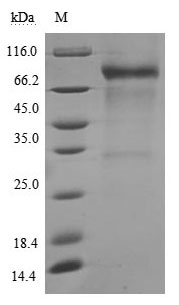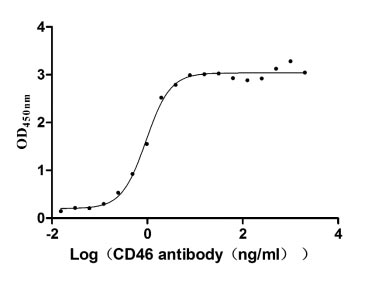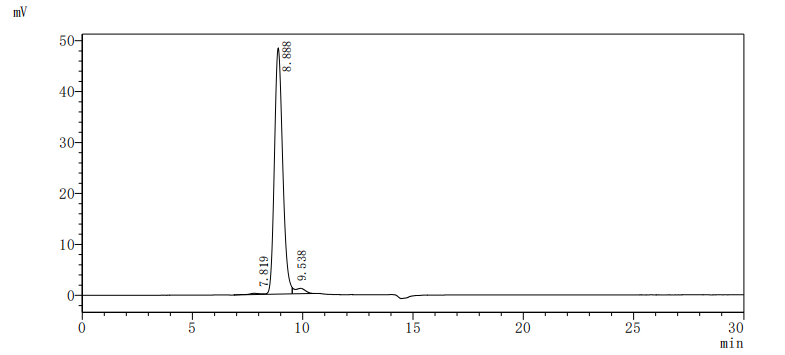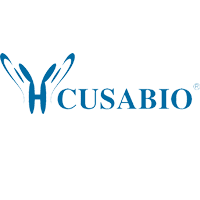The DNA fragment encoding the human CD46 (Cys35-Tyr328) was expressed with a C-terminal hFc-tag in the mammalian cells. The expressed protein is the recombinant human CD46 protein with low endotoxin (< 1.0 EU/µg protein, LAL method) and high purity (> 90%, SDS-PAGE). This CD46 protein displayed a molecular weight of approximately 90 kDa on the gel due to glycosylation. It is biologically active. In the functional ELISA, this CD46 protein can bind to the anti-CD46 antibody with an EC50 of 0.8333-1.054 ng/ml. This recombinant CD46 protein is in stock now.
CD46 is ubiquitously expressed, alternatively spliced complement regulatory protein. It acts as a cofactor for the serine protease factor I to mediate the interaction of C3b and C4b deposited on host cells, thus protecting host cells from injury. CD46 also modulates adaptive immunity and participates in human infectious and Th1 biology. Increased expression of CD46 has been found in many types of cancer.










